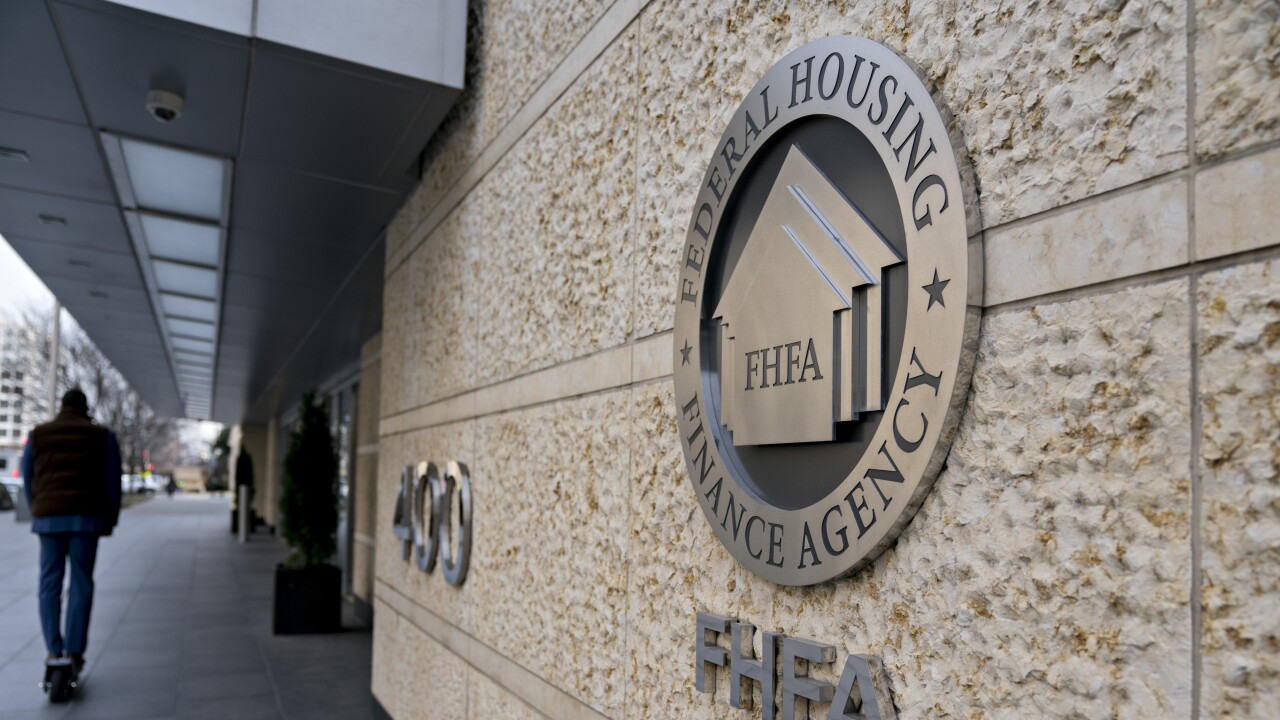The Federal Housing Finance Agency on Wednesday eliminated the requirement for distressed borrowers to have a current, market-rate loan-to-value ratio of 80% or higher before obtaining a type of loan modification offered by two government-sponsored enterprises.
The new terms for Fannie Mae and Freddie Mac’s standard Flex Modifications are in line with broader efforts to make it easier for borrowers to maximize home retention options as temporary payment suspensions and the federal foreclosure ban end. The change also addresses skyrocketing home prices that have raised equity levels and put downward pressure on LTVs, making it tougher for borrowers to obtain Flex Mods. (The ratio used to determine Flex Mod eligibility compares the outstanding loan balance to the home’s current market value.)
“Allowing more families to qualify for an interest rate reduction will prevent unnecessary foreclosures, help strengthen the enterprises' books of business, and make sustainable homeownership a reality for more families currently living with the uncertainty of forbearance," FHFA Acting Director Sandra Thompson said in a press release.
Forbearance rates are relatively low at the GSEs, but the number of loans modified by them recently rose on a consecutive-quarter basis for the first time in a year. The first quarter of 2021 saw 11,434 loan modifications, up from 9,947 during the previous fiscal period, but down from 16,773 in the first quarter of 2020.
The lowering of the bar for Flex Mods as a home retention option follows close on the heels of the FHFA’s move to ensure regulatory protections for borrowers are in place during the gap between the end of the federal foreclosure ban July 31 and the beginning of a new temporary Consumer Financial Protection Bureau directive for work with borrowers at the end of August.
The GSEs had said in April that they were considering broadening the options available for distressed borrowers who have been in forbearance and haven’t been able to return to their original payments.






